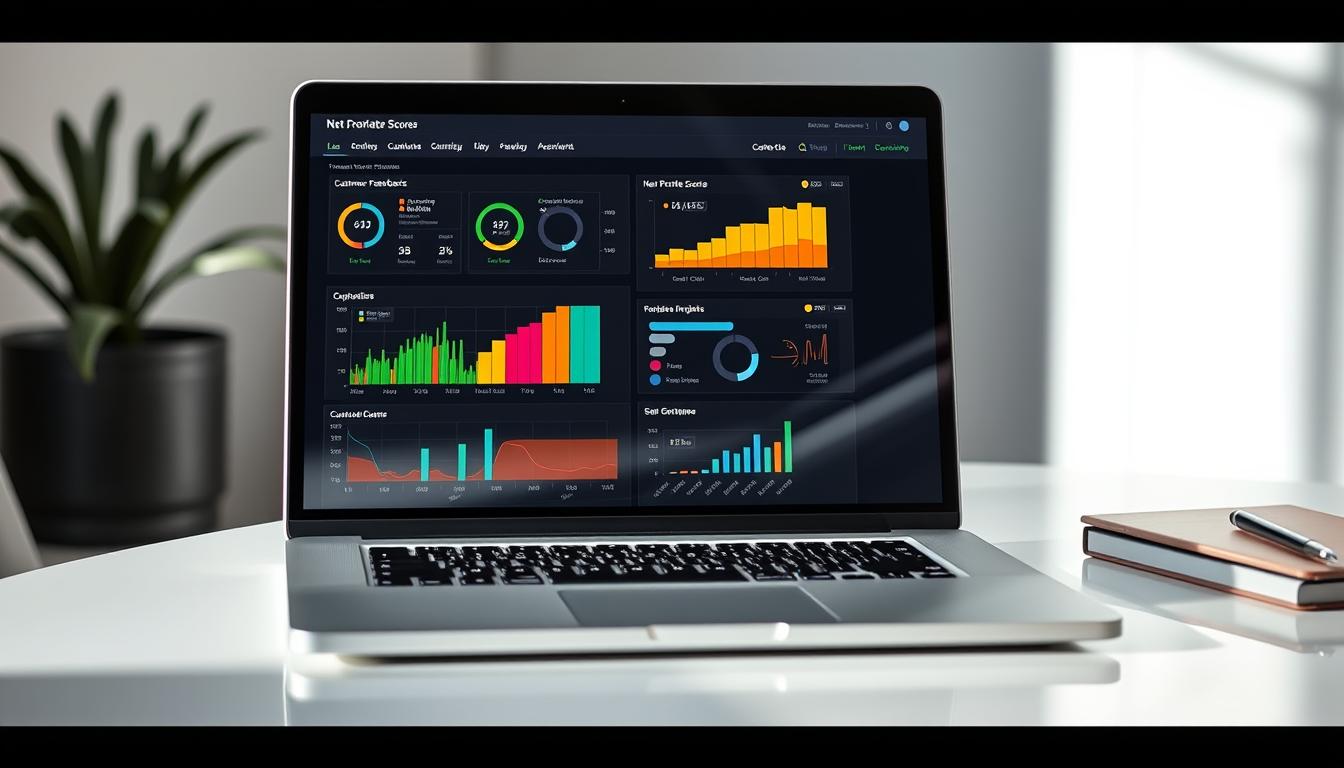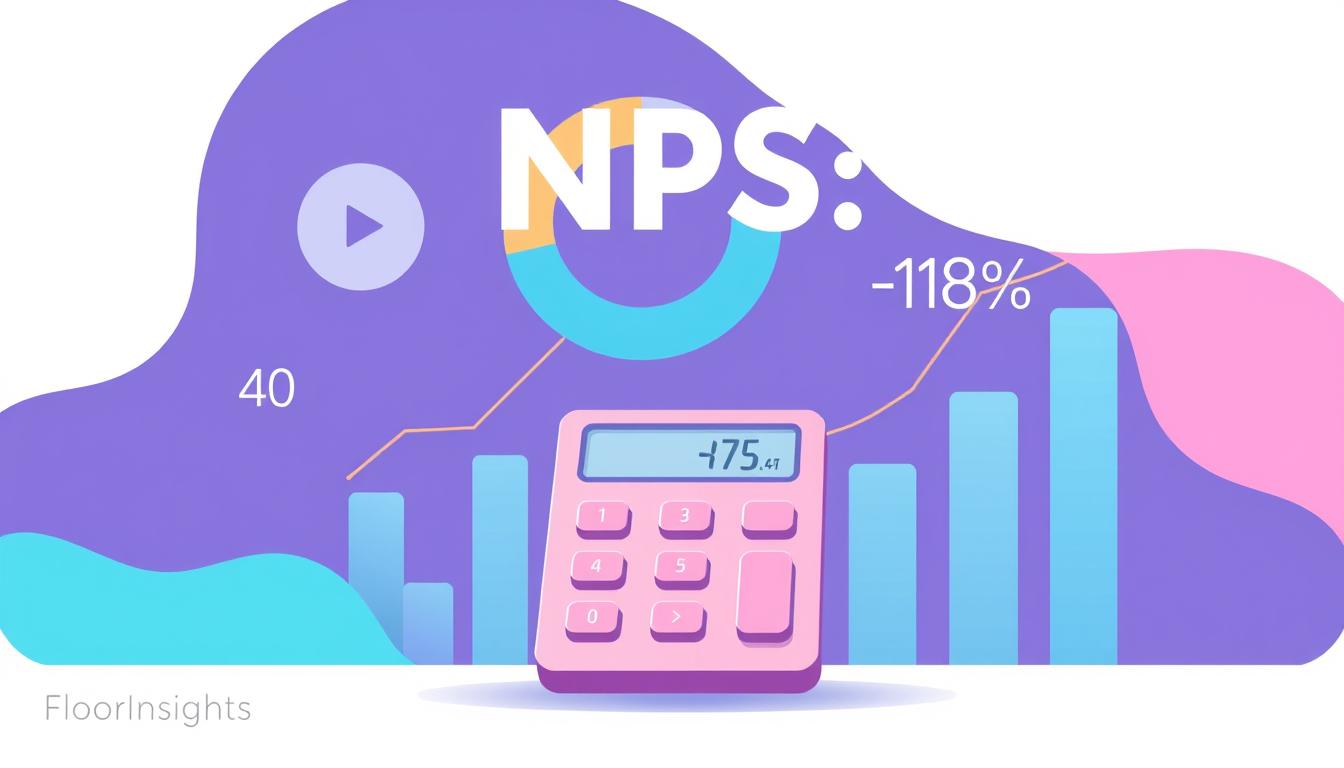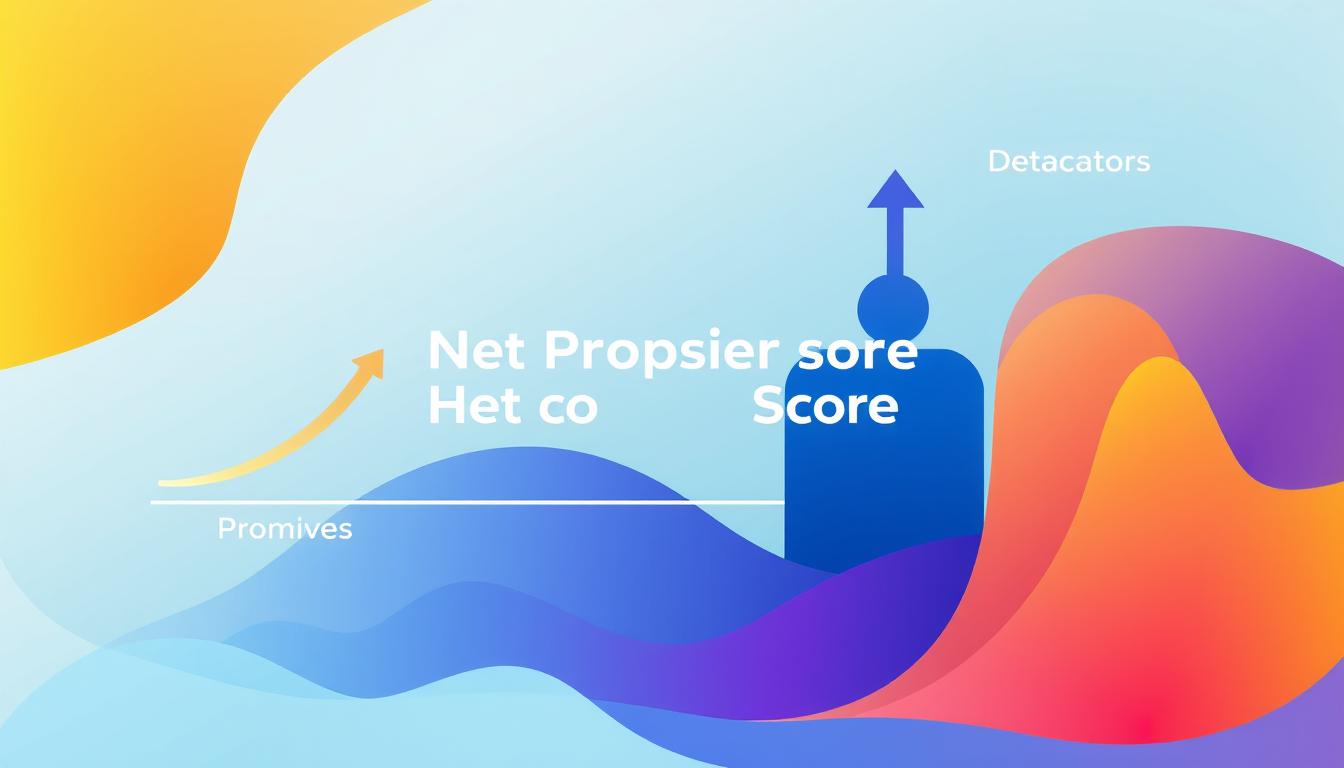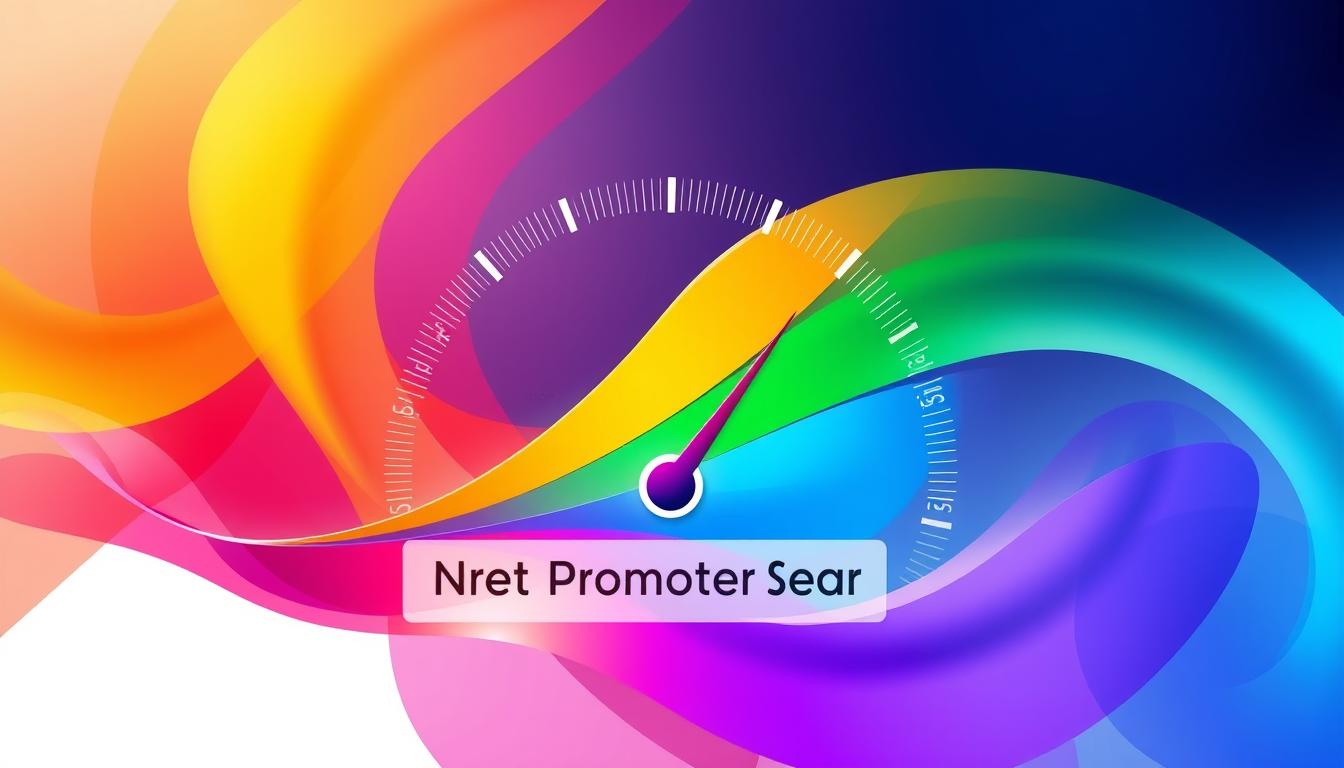As businesses navigate an increasingly competitive landscape, understanding the Net Promoter Score (NPS) becomes vital. NPS is more than just a metric; it’s a strategic tool that provides us with invaluable insights into customer loyalty and satisfaction. By leveraging our NPS score, we can effectively engage in NPS and competitive analysis, helping us differentiate ourselves in the market. Focusing on improving our NPS can enhance our service offerings and allow us to outperform competitors. Moreover, utilizing Net Promoter Score software, such as the one available at nps.floorwalk.in, can streamline tracking these essential metrics, aligning our business strategy with customer insights.
Key Takeaways
- Understanding NPS provides deeper insights into customer loyalty.
- A high NPS score can be a key differentiator in a competitive market.
- Implementing NPS software simplifies tracking and analysis.
- Customer insights can significantly inform our business strategy.
- Improving NPS can enhance our overall service offerings.
Understanding Net Promoter Score (NPS)
The Net Promoter Score (NPS) is a vital metric that helps us gauge customer loyalty and satisfaction. It originated from a simple yet effective question: “How likely are you to recommend our product or service to a friend or colleague?” Using an NPS survey platform, we can collect invaluable customer feedback by asking this question and measuring responses on a scale from 0 to 10.
Based on their answers, respondents are categorized into three groups:
- Promoters: Those who score 9 or 10 are seen as loyal customers who are likely to promote our brand.
- Passives: Scores of 7 or 8 indicate customers who are satisfied but not enthusiastic.
- Detractors: Those scoring between 0 and 6 are unhappy customers who may harm our reputation through negative word-of-mouth.
This categorization forms the basis of the NPS calculation. The formula is straightforward: NPS = % of Promoters – % of Detractors. By employing a robust NPS survey platform, we can effectively track and analyze these scores over time, enabling us to understand shifts in customer loyalty and satisfaction.
Obtaining regular customer feedback allows us to make informed decisions to enhance our services and address any concerns promptly. A keen understanding of the Net Promoter Score helps us build stronger relationships with our customers and drives initiatives aimed at increasing their loyalty.
Importance of a High NPS Score
Understanding the importance of NPS is vital for refining our business strategy. A high NPS score serves as a clear indicator of customer loyalty, reflecting how well we meet our customers’ needs and expectations. Companies that achieve a high NPS score not only stand out in their market but also benefit from increased customer retention and engagement.
Studies reveal a direct correlation between a high NPS score and overall sales growth. Organizations boasting strong NPS ratings generally experience superior customer acquisition costs. This relationship underscores the importance of maintaining strong customer relationships and addressing concerns promptly to enhance loyalty.
In addition to driving retention, a robust NPS gives us valuable insights into potential areas for improvement. Through continuous feedback from customers, we can identify specific service enhancements that align with their expectations. This proactive approach ensures we remain agile and responsive to market changes, ultimately reinforcing our commitment to delivering excellence.
In summary, a high NPS score not only reflects our performance but also drives customer loyalty and contributes to long-term business success.
How NPS Influences Customer Loyalty
The connection between the Net Promoter System (NPS) and customer loyalty is profound. Customer loyalty directly impacts a brand’s success, reinforcing the importance of understanding how NPS influences not only retention but also engagement. When customers feel valued and have positive experiences, they are likely to become promoters of our brand, illustrating the power of brand advocacy.
Satisfied customers tend to exhibit behaviors that promote brand loyalty, often leading to recommendations to others. This not only solidifies their loyalty but also attracts new customers, creating a positive feedback loop. As we enhance our customers’ experiences, their likelihood of participating in brand advocacy significantly increases.
By implementing the Net Promoter System effectively, we can engage with our customers on a deeper level. Regular monitoring and analysis of NPS data help us identify areas for improvement. This strategy leads to stronger emotional connections with our customers, which directly enhances customer loyalty and encourages them to become vocal advocates for our brand.
The key to fostering lasting customer loyalty lies in understanding and acting on the insights gleaned from NPS feedback.
It is essential to realize that the relationship between NPS and customer loyalty is cyclical. A high NPS translates into customer loyalty, which in turn can lead to even higher NPS scores. Each satisfied customer creates a network effect, promoting further growth as their advocacy brings in new customers and strengthens our brand’s standing in the market.
| Factors Influencing Customer Loyalty | NPS Contribution |
|---|---|
| Quality of Service | High NPS scores reflect excellent service, leading to loyalty. |
| Customer Engagement | Active engagement can improve NPS through customer satisfaction. |
| Feedback Implementation | Responding to customer feedback can enhance NPS results. |
| Trust and Transparency | Building trust fosters loyalty and drives positive NPS feedback. |
In summary, we can cultivate a loyal customer base when we strategically manage the elements of the Net Promoter System. Understanding the NPS influence on customer loyalty allows us to not only retain customers but turn them into advocates who champion our brand in their communities.
Leveraging Net Promoter Score Software
Applying the right net promoter score software can significantly enhance our understanding of customer sentiment and improve our overall business strategy. By utilizing NPS features effectively, we can make data-driven decisions that positively impact customer experience.
Key Features of NPS Software
Effective net promoter score software comes equipped with various features designed to collect and analyze customer feedback in real-time. Some key NPS features include:
- Real-time feedback collection: Obtaining customer opinions as they occur allows us to stay responsive to their needs.
- Detailed analytics: Advanced analytics tools help us interpret data, revealing insights about customer satisfaction and loyalty.
- Customizable surveys: We can tailor surveys to fit our brand and customer demographic, ensuring relevance and increased response rates.
- Reporting capabilities: In-depth reporting functionalities enable us to visualize data trends and present findings to stakeholders.
Integrating NPS Software with Business Strategy
To truly maximize the benefits of NPS integration, aligning our net promoter score software with our broader business objectives is essential. This strategy enhances our customer experience by ensuring feedback informs our decision-making processes. Some effective ways to integrate NPS software with our business strategy include:
- Incorporating NPS insights into product development, ensuring our offerings resonate with customer needs.
- Flowing customer feedback into marketing campaigns, making our messaging more relatable and impactful.
- Establishing key performance indicators (KPIs) based on NPS data to monitor progress and adapt strategies accordingly.
Measuring Your NPS Effectively
Measuring NPS effectively is crucial for understanding customer sentiment and making informed business decisions. To achieve accurate Net Promoter Score measurement, we recommend establishing best practices that can help mitigate common challenges. Regular NPS tracking will ensure that we gather consistent and reliable data over time.
First, it is essential to set up a schedule for NPS surveys. Conducting these surveys at regular intervals, such as quarterly or bi-annually, allows us to monitor changes in customer loyalty and satisfaction. Furthermore, by timing the surveys strategically, we can capture insights on customer experience during key interactions with our brand.
Next, we must ensure that our respondent sample is representative of our overall customer base. This can be accomplished by segmenting respondents by demographics, purchase patterns, or engagement levels. A diverse pool of responses enhances the reliability of our Net Promoter Score measurement, enabling us to identify trends and patterns more effectively.
Tracking shifts in NPS over time is equally important. By analyzing historical data, we can gain valuable insights into how changes in our products or services impact customer loyalty. This enables us to respond proactively to customer feedback, fostering a sense of connection and trust with our audience.
To visualize the importance of consistent NPS tracking, we can use the following table:
| Survey Frequency | Potential Insights | Actionable Steps |
|---|---|---|
| Monthly | Immediate feedback on new products | Adjust offerings as needed |
| Quarterly | Trends throughout the year | Implement seasonal strategies |
| Bi-Annual | Long-term loyalty shifts | Revamp customer engagement plans |
In summary, effectively measuring NPS requires regular surveys, a representative respondent sample, and diligent tracking of changes in NPS over time. Implementing these strategies can greatly enhance our understanding of customer satisfaction.
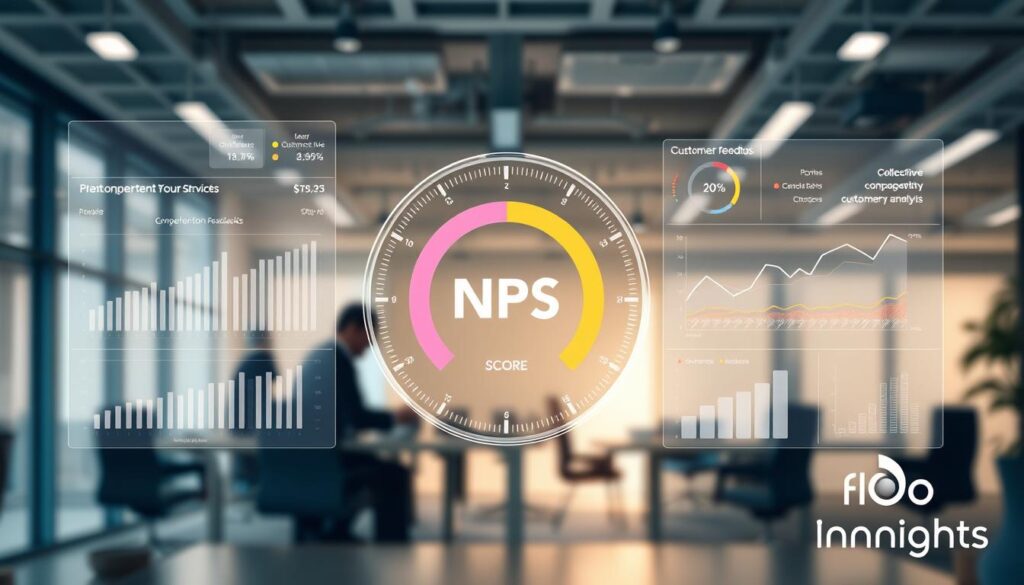
Competitive Analysis Using NPS
Understanding where we stand in the competitive landscape is crucial for our success. By employing NPS benchmarking against industry standards, we can effectively gauge our performance metrics in relation to our competitors. This process enables us to identify not only our strengths but also the gaps in our service offerings compared to other players in the market.
Benchmarking Against Competitors
NPS benchmarking provides a powerful tool for competitive analysis. By comparing our organized NPS data with that of our competitors, we can derive valuable insights. This exercise often uncovers opportunities for improvement in the areas where we may be lacking.
- Identify direct competitors with similar products or services.
- Gather their NPS data, if available, to understand where they stand.
- Compare this data against our own NPS results to see the landscape clearly.
- Analyze customer feedback to pinpoint performance metrics that need attention.
- Strategize improvements that align our offerings with customer expectations.
To better visualize our findings, we can present the NPS results in a meaningful way. Below is a sample table illustrating comparative NPS scores alongside industry standards:
| Company | NPS Score | Industry Standard |
|---|---|---|
| Our Company | 45 | 42 |
| Competitor A | 38 | 42 |
| Competitor B | 52 | 42 |
Our ability to conduct thorough competitive analysis using NPS enables us to not only gauge our performance metrics but also adapt our strategies. By continuously monitoring and adjusting according to NPS benchmarks and industry standards, we can enhance our market position and deliver superior customer experiences.
Strategies to Improve Your NPS Score
Improving our NPS score requires a multifaceted approach that focuses on customer experience and engagement. We can start by implementing personalized communication, which helps create deeper connections with our customers. When we tailor our messages to individual preferences and needs, we enhance engagement and build brand loyalty.
Proactive engagement is another critical element in our strategy. We should not wait for customers to voice their concerns; instead, we can reach out to them regularly, offering assistance and gathering insights. This approach not only addresses potential issues before they escalate but also fosters a positive relationship.
Prompt resolution of customer issues can significantly contribute to our efforts to improve our NPS score. When customers feel that their concerns are promptly addressed, their satisfaction increases, leading to increased loyalty. Establishing effective channels for feedback analysis is essential. By scrutinizing insights from NPS surveys, we can identify trends and areas that require improvement.
To summarize, here are effective strategies to enhance our NPS score:
- Enhance personalized communication.
- Engage proactively with customers.
- Resolve issues promptly and efficiently.
- Conduct thorough feedback analysis to inform service adjustments.
Utilizing these customer engagement strategies empowers us to create outstanding customer experiences, ultimately leading to higher NPS scores. We should continue to refine our actions based on customer feedback to ensure ongoing loyalty and satisfaction.
| Strategy | Description | Expected Outcome |
|---|---|---|
| Personalized Communication | Tailoring messages to meet individual customer preferences. | Increased customer engagement and loyalty. |
| Proactive Engagement | Regular outreach to customers for feedback and support. | Early issue resolution and positive customer relationships. |
| Prompt Issue Resolution | Quickly addressing customer concerns as they arise. | Enhanced satisfaction and higher NPS scores. |
| Feedback Analysis | Analyzing insights from NPS surveys for service improvements. | Informed adjustments leading to better customer experiences. |
Implementing Feedback from NPS Surveys
We must recognize the significance of acting on the feedback obtained from NPS surveys. This feedback serves as a direct channel to understand our customers’ perspectives, allowing us to glean meaningful customer insights. By translating these insights into actionable steps, we can effectively address customer concerns and preferences, fostering a stronger connection with our audience.
Acting on Customer Insights
Utilizing customer insights collected through NPS feedback is crucial for our strategic initiatives. Each survey response has the potential to reveal patterns and trends that can inform our decisions. We encourage the following best practices:
- Analyze trends over time to identify recurring themes.
- Segment feedback based on customer demographics to tailor responses.
- Prioritize issues raised by multiple customers to enhance our service.
The deliberate implementation of insights gained plays a vital role in fostering continuous improvement, ensuring that we remain responsive to our customers’ needs.
Employee Training Based on NPS Feedback
Employee training is paramount in ensuring that our staff is equipped to elevate customer interactions. Tailoring employee training programs based on NPS feedback can lead to significant enhancements in service delivery. Key components of this training can include:
- Workshops focused on customer service excellence.
- Role-playing scenarios that reflect common customer feedback.
- Encouraging open discussions about feedback to create an engaged workforce.
Through focused employee training, we can empower our teams to proactively address customer needs and concerns, ensuring that our organizational culture prioritizes customer satisfaction.
| Feedback Type | Action Taken | Impact on NPS |
|---|---|---|
| Service Delays | Improved communication about timelines | +5 |
| Product Quality Issues | Increased quality control checks | +8 |
| Customer Support Responsiveness | Enhanced training for support staff | +7 |
Case Studies of High NPS Achievers
Exploring NPS case studies offers valuable insights into how various organizations achieve remarkable customer satisfaction. We can delve into the successful strategies that leading firms implement to cultivate high NPS scores and foster brand loyalty.
For instance, companies like Apple and Amazon exemplify successful strategies focusing on innovative customer engagement and delivering consistent service quality. Apple integrates personalized customer interactions across its service channels, enhancing user experience and driving loyalty. Their focus on design and functionality assures customers that they receive not just a product but a seamless experience.
Amazon’s successful NPS success stories stem from a commitment to customer-centric policies. They prioritize fast delivery and an extensive selection, continually investing in logistics to meet customer expectations. Their regular updates and follow-ups post-purchase contribute significantly to their high NPS ratings.
Through these examples, we can identify actionable takeaways that can transform our customer engagement strategies. Understanding and applying the lessons from these NPS case studies will enable us to foster deeper connections with our audience and improve our overall NPS. Adopting these successful strategies can position us favorably in competing markets.
Conclusion
In summarizing our discussion on Net Promoter Score (NPS), it becomes evident that implementing a high NPS framework is integral to our success and competitiveness. The importance of customer feedback cannot be overstated; insights gleaned from NPS surveys empower us to refine our business strategies and foster deeper customer loyalty. By focusing on how customers perceive our brand, we position ourselves to enhance not only customer satisfaction but ultimately, our overall growth.
The data and strategies we’ve explored demonstrate that a robust NPS can significantly impact customer engagement and retention, providing us with a clear edge over the competition. As we seek to elevate our NPS for business growth, we encourage each of us to consider how these insights can be woven into our day-to-day practices and long-term objectives.
We invite everyone to explore the potential of NPS software as a valuable tool in this journey. For further guidance on effectively integrating customer feedback into our business models, we can reach out for expert assistance. For more information, we can visit nps.floorwalk.in or contact +91-7836066777. Together, we can harness the power of NPS to drive sustainable growth.
FAQ
What is the Net Promoter Score (NPS)?
The Net Promoter Score (NPS) is a metric used to gauge customer loyalty and satisfaction by asking customers how likely they are to recommend our products or services to others. It’s a powerful tool that enables us to assess and improve customer relationships.
How can we measure our NPS effectively?
What are the key features of Net Promoter Score software?
Our net promoter score software includes features like real-time feedback collection, detailed analytics, and reporting capabilities. These functionalities help us derive actionable insights from customer feedback and enhance our overall customer experience.
Why is a high NPS score important for our business strategy?
How does the Net Promoter System influence customer loyalty?
The Net Promoter System focuses on engaging Promoters—customers who are highly satisfied and enthusiastic about our brand. By fostering relationships with these customers, we can enhance brand advocacy and create a community of loyal customers who promote our offerings.
What strategies can we implement to improve our NPS score?
How can we integrate NPS feedback into our employee training programs?
We can incorporate NPS feedback into our employee training programs by ensuring that staff is aware of customer preferences and concerns. Training can focus on equipping our team with the skills necessary to improve customer interactions, ultimately enhancing our service delivery.
How do we benchmark our NPS against competitors?
We can benchmark our NPS against competitors by comparing our scores with industry standards. This process allows us to identify gaps in our offerings and facilitates strategic improvements needed to gain a competitive advantage.
What are the benefits of using an NPS survey platform?
Utilizing an NPS survey platform allows us to collect customer feedback systematically, analyze data efficiently, and generate actionable insights that can inform our strategies for enhancing customer loyalty and driving business growth.
Related Posts
- How to Use NPS to Identify Pain Points in Telecom Services – NPS in Telecommunications
- Measuring NPS Across Digital Touchpoints – NPS in Digital Transformation
- Using NPS to Improve Telecom Installation and Support Services – NPS in Telecommunications
- Using NPS to Build a Customer-Centric Brand
- NPS as a Tool for Optimizing the Customer Onboarding Process – NPS and Customer Journey
- The Role of NPS in Franchise Customer Experience Strategies – NPS for Franchise Businesses
- Leadership Accountability in NPS Performance – NPS and Leadership
- NPS and the Role of Personalized Rewards in Driving Loyalty – NPS and Loyalty Programs

